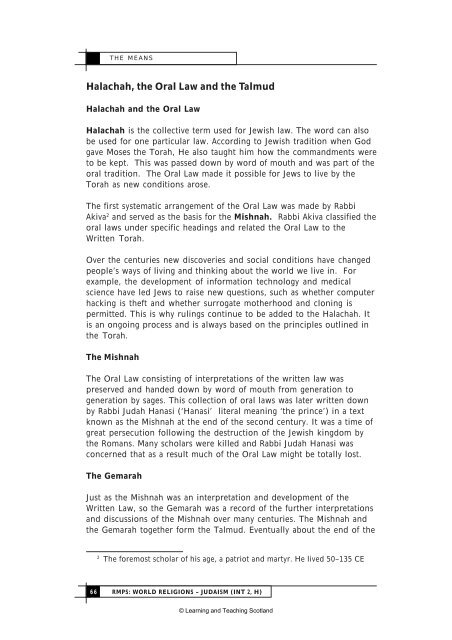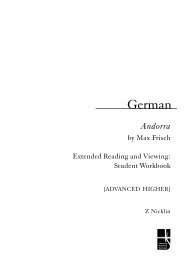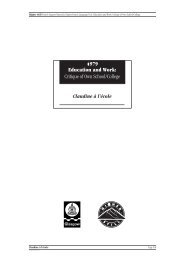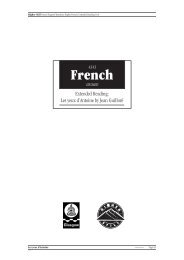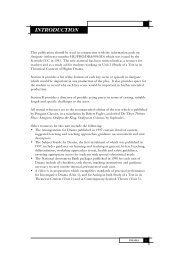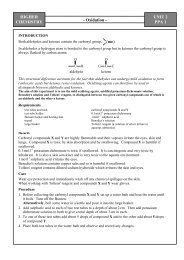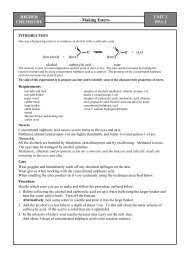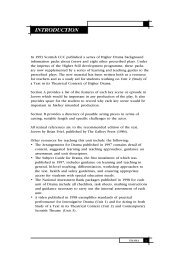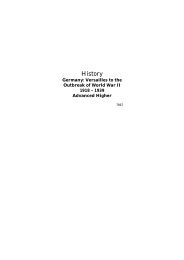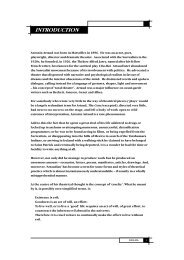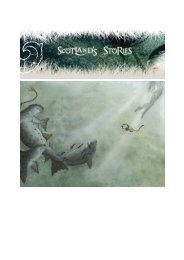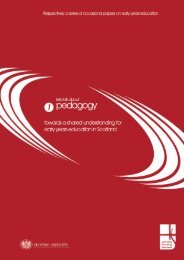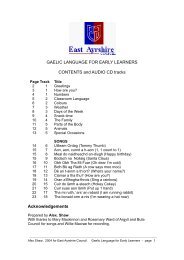RMPS - Int2/Higher - World Religions - Judaism - Education Scotland
RMPS - Int2/Higher - World Religions - Judaism - Education Scotland
RMPS - Int2/Higher - World Religions - Judaism - Education Scotland
You also want an ePaper? Increase the reach of your titles
YUMPU automatically turns print PDFs into web optimized ePapers that Google loves.
THE MEANS<br />
Halachah, the Oral Law and the Talmud<br />
Halachah and the Oral Law<br />
Halachah is the collective term used for Jewish law. The word can also<br />
be used for one particular law. According to Jewish tradition when God<br />
gave Moses the Torah, He also taught him how the commandments were<br />
to be kept. This was passed down by word of mouth and was part of the<br />
oral tradition. The Oral Law made it possible for Jews to live by the<br />
Torah as new conditions arose.<br />
The first systematic arrangement of the Oral Law was made by Rabbi<br />
Akiva 2 and served as the basis for the Mishnah. Rabbi Akiva classified the<br />
oral laws under specific headings and related the Oral Law to the<br />
Written Torah.<br />
Over the centuries new discoveries and social conditions have changed<br />
people’s ways of living and thinking about the world we live in. For<br />
example, the development of information technology and medical<br />
science have led Jews to raise new questions, such as whether computer<br />
hacking is theft and whether surrogate motherhood and cloning is<br />
permitted. This is why rulings continue to be added to the Halachah. It<br />
is an ongoing process and is always based on the principles outlined in<br />
the Torah.<br />
The Mishnah<br />
The Oral Law consisting of interpretations of the written law was<br />
preserved and handed down by word of mouth from generation to<br />
generation by sages. This collection of oral laws was later written down<br />
by Rabbi Judah Hanasi (‘Hanasi’ literal meaning ‘the prince’) in a text<br />
known as the Mishnah at the end of the second century. It was a time of<br />
great persecution following the destruction of the Jewish kingdom by<br />
the Romans. Many scholars were killed and Rabbi Judah Hanasi was<br />
concerned that as a result much of the Oral Law might be totally lost.<br />
The Gemarah<br />
Just as the Mishnah was an interpretation and development of the<br />
Written Law, so the Gemarah was a record of the further interpretations<br />
and discussions of the Mishnah over many centuries. The Mishnah and<br />
the Gemarah together form the Talmud. Eventually about the end of the<br />
66<br />
2 The foremost scholar of his age, a patriot and martyr. He lived 50–135 CE<br />
<strong>RMPS</strong>: WORLD RELIGIONS – JUDAISM (INT 2, H)<br />
© Learning and Teaching <strong>Scotland</strong>


